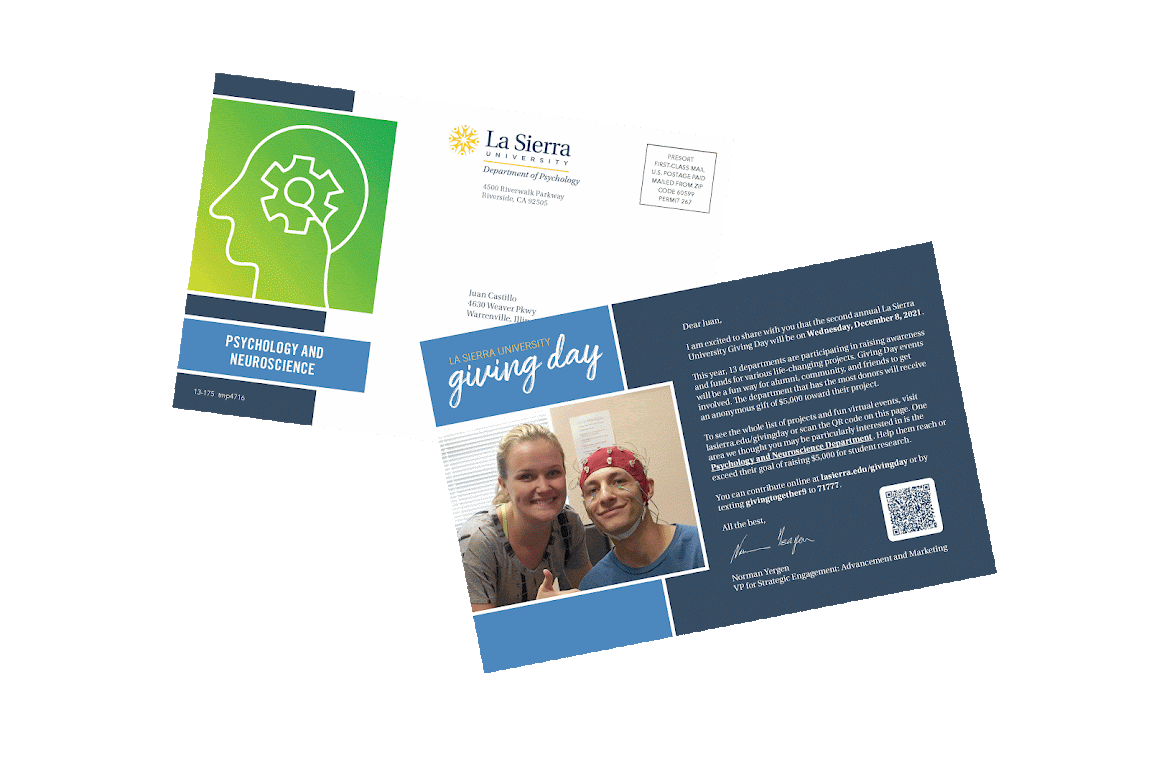ROI
of On-Demand Direct Mail
Are you ready for your direct mail strategy to match the nimbleness of your digital campaigns?


Who reads direct mail anymore?
Your donors do. Despite the many other ways we communicate with donors today, 86% of Americans retrieve their mail four or more days per week and 68% of them do it every day.
USPS Mail Moments 2018
Rate at which Americans retrieve their mail
- 4+ days/week
- 7 days/week
Is it as effective as email?
It’s actually more effective. 73% of Americans prefer mail over other forms of communication, and 74% of direct marketers report that it is more effective than other marketing channels.
Lob’s 2023 State of Direct Mail

Adding direct mail to email, video, and text channels creates a holistic experience for fundraising and stewardship.
80% of Millennials report that they look forward to getting their mail.
What about younger audiences?
Surprisingly, younger audiences like getting mail even more than their older counterparts.
Gen Zers report greater levels of happiness when receiving physical mail than digital communication.
USPS “Mail and E-Commerce Through the Ages” (2020-2021)
“Still Relevant: A Look at How Millennials Respond to Direct Mail” (2019)
So what's the problem with traditional direct mail?
In the past, project costs and time constraints have required direct mail to be generic, impersonal, and centered around charities. Traditional direct mail projects require a high level of effort in exchange for a low ROI.
The solution:
On-Demand Direct Mail
With on-demand direct mail, organizations can reach audiences in a way that is flexible, targeted, and much more effective.
On-Demand Direct Mail is More Effective
Donors, especially younger donors, prefer mail that is personalized and eye catching. On-demand direct mail allows organizations to tailor mail pieces to specific audiences with much less hassle than traditional mail.
USPS “Mail and E-Commerce Through the Ages” (2020-2021)
McKinsey Co. “The Value of Getting Personalization Right – or Wrong – is Multiplying” (2021)
71% of consumers expect personalization
76% get frustrated
when it’s missing
Regular mail rates are twice as expensive as nonprofit rates
On Demand Direct Mail is More Affordable
Using advanced digital printing, on-demand mail can create high-quality custom print pieces at a fraction of the cost of traditional printing. And by leveraging co-mingling, organizations can take advantage of nonprofit mail rates even when mailing a piece at a time.
USPS “Mail and E-Commerce Through the Ages” (2020-2021)
On-Demand Direct Mail is More Donor-Centric
With on-demand printing, organizations can send mail when it is relevant to the donor as opposed to having to mail at times that are convenient for the organization.
Mass Mailing
Fall
Mass Mailing
CYE
On-Demand
Donor’s Gift Anniversary
On-Demand
Donor’s Birthday
Mass Mailing
Spring
Mass Mailing
FYE
On-Demand
Donor Job Promotion
100,000 pieces... or 1
Advancements in digital print technology make it possible to create personalized, high-quality mail pieces in any quantity.
Mail can be produced and sent with any frequency, be it daily, weekly or monthly. By leveraging co-mingled mail batches, nonprofits can send single pieces and still receive a reduced bulk mail rate.
It works. Here's the proof.
We conducted a study to see what would happen when a university replaced their traditional annual fund mailings with on-demand direct mail.
Here’s what happened…
Year 1: Traditional Direct Mail
SYBUNTS of 13-24 months gave at a rate of 0.98%. Their gifts cost more to raise than their total giving: an ROI of $0.69 for every $1 spent.
Year 2: On-Demand Direct Mail
The same segment gave at a rate of 5.23%. The ROI of on-demand direct mail for this group was $6.84 for every $1 spent, nearly ten times more than the previous year.
10x ROI
in one year after switching to on-demand
The right pieces.
At the right time.
At a lower cost.
Let’s chat if you’re ready to send direct mail at the right time – with the right message – to engage every single donor.
